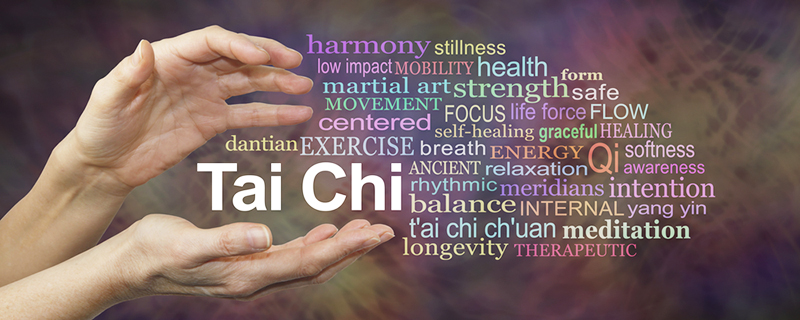Scientific studies always have limitations. Scientific studies on Taijiquan (太極拳) will always have limitations, and appropriate and rigorous controls are especially difficult to design. Most scientific studies that have examined so called MBIs (Mind-Body Interventions) or “alternative” medical approaches, etc. [including studies that specifically look at “Tai Chi”] end up only providing preliminary results that would require more testing in order to clarify and understand, especially if one desires to use Taijiquan therapeutically.
Despite the difficulties in researching MBIs, the interest continues because of the promise of relatively inexpensive therapies that patients can do without the need of specialized equipment or facilities. Although drugs are used to treat many of these conditions, drugs are not very effective for some patients and many people prefer lifestyle changes if they can be shown to be effective. Many MBIs can be practiced without equipment requirements or even supervision, as long as the people being treated have sufficient motivation and enjoy the MBIs. Even when they are not shown to be significantly helpful, they rarely show any harmful effects.
The National Center for Complementary and Integrative Health was created in the USA in 1999, and since publications by the World Health Organization in 2002 and 2013, there has been increased interest in researching “traditional and complementary medicine”. However, evaluating early and recent scientific studies involving Taijiquan is typically difficult.

Since Taijiquan is a “holistic” practice that incorporates movement and posture, strength, flexibility, efficiency, breathing, concentration, attention, mindfulness, imagery, visualization, intention, as well as psychosocial interactions, rituals, spirituality and much more, scientific studies rarely have satisfactory controls. Most studies can only provide preliminary indications and it is not certain which aspects of the practice are contributing to the results (or even if the benefits are, instead, primarily attributable to the Hawthorne or placebo effects, etc.). Without having robust and appropriate controls, research results and conclusions also cannot be robust.
One reason that research on Taijiquan so far has primarily only produced preliminary data is that the numerous variables are so difficult to control for. How can researchers design experiments that take into consideration as many of the variables as possible or that satisfactorily isolates limited factors so that there are not so many variables to confuse the interpretation of the results? What variables are important to study?
One problem with scientifically studying Taijiquan is that so many factors are involved that it is difficult to know which component contributes to what effect. Since Taijiquan is considered to be holistic, one cannot really isolate too many individual factors while still considering the result to be Taijiquan. Isolating individual factors and/or greatly simplifying and modifying the forms results in the product no longer being considered as Taijiquan.
Would isolating and emphasizing the effective component(s) lead to more effective treatments, or would that reduce any synergistic effects that practicing “holistically” may provide? I am unaware of any studies that address these questions, but some researchers make modifications to the standard Taijiquan forms in order to increase the effectiveness of the treatments (see for example the Tai Ji Quan: Moving for Better Balance™ program: https://www.ncoa.org/wp-content/uploads/Tai-Chi-Moving-for-Better-Balance.pdf).
While there have been a few scientific studies that examined long term Taijiquan practitioners, who presumably learned in depth, most studies are looking for clinical applications and only teach novices a short and modified simple sequence of movements. While these movements are based on Taijiquan, the simplification and shallow depth of the instruction, required for clinical studies typically lasting only several months, means that they are better considered as Qigong (氣功) exercises rather than Taijiquan, and certainly not as martial arts practice.
Short repetitive simplified forms closely resemble Qigong exercises, and many studies examining the therapeutic effects of “Tai Chi” or Qigong, or both in the same studies, show similar results, so much so that “Tai Chi” and Qigong could probably be grouped together for analysis of effectiveness. Although some variations are inevitable due to the numerous variations of Qigong and Taijiquan, they mostly have similar health expectations, relationships with the instructors and classmates, and use thoughtful meditative movement practices, etc. in the various research designs. The martial or sport aspects of Taijiquan are rarely examined.
Still, we should use everything that is available at the present time in order to increase our understanding and to inform what is tested in the future. The scientific approach takes into consideration past research, whether or not one agrees with the data or its interpretation; it is more than just designing and carrying out experiments independent of other research. Relevant research can come from many different fields and is not limited to only studies that specifically examine Taijiquan (despite many practitioners’ feelings that Taijiquan is unique).
Some researchers lump what seem to be unrelated arts into broader categories in their studies, which confounds the clarity of what the contributing factors are. For example, if the researchers are interested in the benefits of the “relaxation response” in countering the adverse effects of stress, then they may include Taijiquan and/or Qigong along with various types of meditation and mind-body interventions, Yoga, and even repetitive prayer. The results of the relaxation response can effect measurements of numerous conditions including hypertension, anxiety, insomnia, diabetes, rheumatoid arthritis, and aging factors.
There are far too many potential contributing factors (variables) to control for them all, and the results often affect numerous systems, and all of these can be produced by numerous practices used as interventions. So what, if anything, can be accurately attributed to the unique practice of Taijiquan, and do all versions of Taijiquan have these effects, or only the simplified and modified versions used in the clinical setting in which the studies took place?

Leave a Reply